Did you notice a 1st, 2nd, or 3rd written next to someone’s LinkedIn username? What about when you see the out of network message?
These are categories that LinkedIn assigns to profiles based on your own connections on LinkedIn, and they will determine who you can and cannot reach out to.
Let’s break them down a bit further.
Definitions and strategies for LinkedIn connection categories
1st degree connections and your direct network on LinkedIn
1st-degree connections are individuals you have directly connected with on the platform.
To manage and expand your direct network effectively, it’s essential to be strategic and intentional.
- How to connect and foster 1st-degree connections
Connect with colleagues, industry peers, and professionals you’ve met at events. Personalize your connection requests to increase acceptance rates and lay the groundwork for meaningful interactions.
Bear in mind that your 1st degree connections are likely to see your posts on LinkedIn, so in order to properly engage with them and attract them, you need solid posts. But fear not, we’ve got your back.
2nd degree connections
One step away from your immediate circle are the 2nd-degree connections.
These individuals are connected to your 1st-degree connections and represent a large network of potential contacts you can leverage to extend your professional reach.
- Bridge role of 2nd degree LinkedIn Connections: Recognizing the value of these connections is crucial as they can serve as bridges to new opportunities and introductions to other professionals.
- How to reach out to 2nd degree connections without being overbearing: The key is subtlety and mutual benefit. Request introductions through mutual connections or engage with their content to naturally build rapport before reaching out directly.
Remember that you won’t be able to message your 2nd and 3rd degree connections, as you haven’t connected with them yet.
You can either send a connection request or use LinkedIn InMail!
If you want some tips on what to write and what to avoid in your connection requests, check out this video! ⬇️
3rd degree connections and their potential
3rd-degree connections are individuals who are connected to your 2nd-degree connections.
While more distant, they can still play a role in expanding your network further.
- The impact of 3rd-degree connections within your LinkedIn Network: Although they are the outermost layer of your direct network, 3rd degree connections can significantly extend your reach and uncover opportunities that may not be accessible otherwise.
- How to contact 3rd-degree connections: Use LinkedIn’s introduction features or join common groups to facilitate initial contact. Engage thoughtfully with their content to establish a connection before sending a direct message.
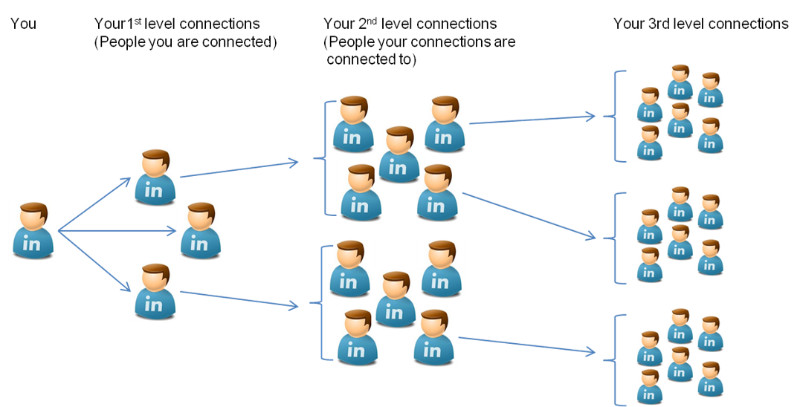
LinkedIn member (out of network)
LinkedIn members with the out of network message in their profiles are so far away from your network that you don’t share any connections with them.
But you can still reach out and connect with them.
If you have InMail credits and if the option is available, you can contact them through LinkedIn InMail.
Lear how to make use of LinkedIn’s algorithm
Connection presentation on LinkedIn
LinkedIn’s algorithm takes into account shared interests, mutual connections, work history, and group memberships to suggest potential new 1st-degree connections.
With 2nd and3rd degreeconnections, you will see an icon stating the degree of the connection, and you will be able to get closer to them by using the “Connect” or “Follow” buttons.
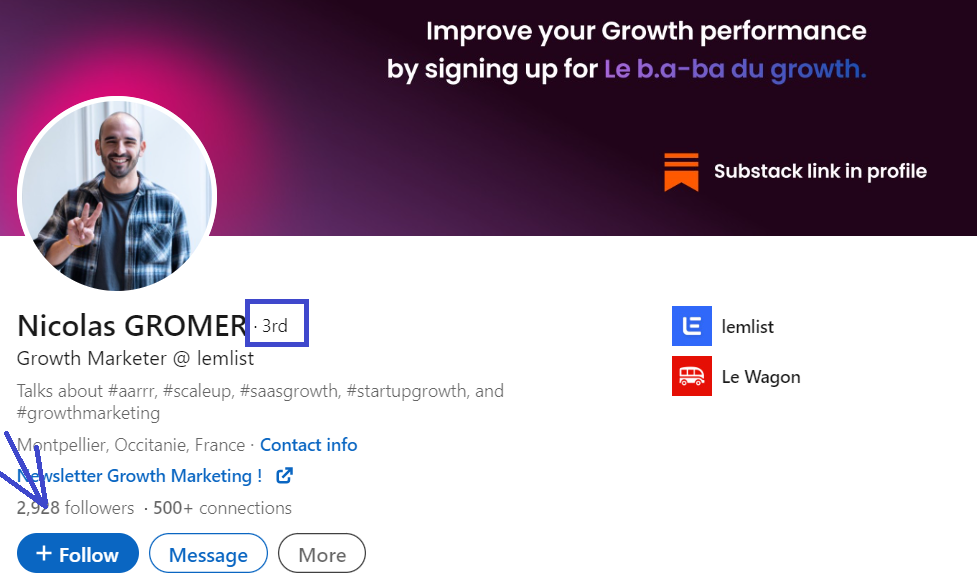
Strategies to share content tailored to different LinkedIn connection levels
Content sharing on LinkedIn should be tailored to resonate with different tiers of connections.
Check out this video and start writing viral posts! ⬇️
What appeals to a 1st-degree connection might differ from content that would engage a 2nd or 3rd-degree connection.
- 1st-degree connections
Share updates and content reinforcing your professional relationship and common interests.
- 2nd degree connections
Consider creating content that showcases your expertise and encourages your mutual connections to engage, increasing visibility. These connections may have heard something about you, so you want to prove that you are in fact the best choice.
- 3rd-degree connections and people outside of your LinkedIn network
Broader industry insights and thought leadership pieces can position you as a knowledgeable figure in your field. Make sure you craft appealing posts to anyone in your industry, so that these connections will reach them once they’re shared.
By commenting on posts you’ll also ensure that these connections see your presence on LinkedIn.
Setting LinkedIn profile privacy preferences
LinkedIn’s privacy settings can significantly affect your networking potential. A well-calibrated privacy setting ensures you are open to networking opportunities while maintaining control over your personal information.
- Adjust your profile viewing options to determine how you appear to others when you visit their profiles, which can affect their likelihood of reciprocating the visit. Click your profile icon and select Settings & Privacy. Then, in the left-hand menu, click Visibility.
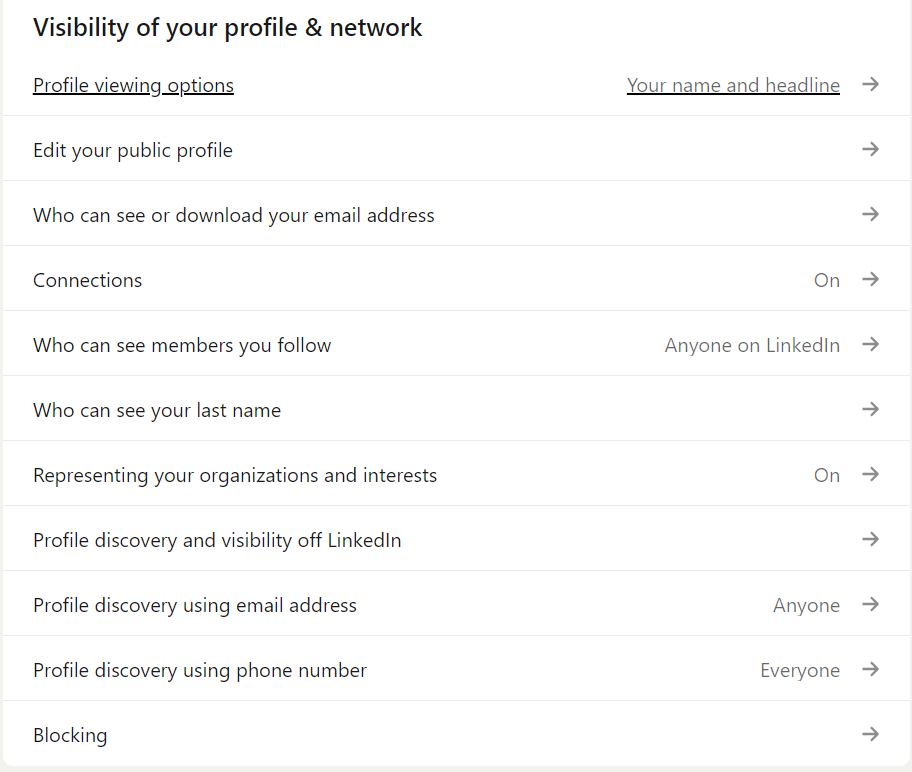
- Consider what personal information you’re comfortable sharing with your network and LinkedIn members outside your connections.
LinkedIn’s networking protocols
Beyond the 3rd-degree connections
Those connections beyond your 3rd-degree connections are professionals who don’t fall within your immediate circles but can be valuable additions to your network.
- Use LinkedIn’s search and content engagement to discover and connect with professionals outside of your current network reach.
- Join LinkedIn groups and participate in discussions to bridge the gap to these “Out of Network” individuals.
Invest in LinkedIn’s InMail
LinkedIn’s InMail service is a powerful tool for reaching out to professionals you’re not yet connected with.
To maximize its potential, your messages should be concise, personalized, and professionally compelling.
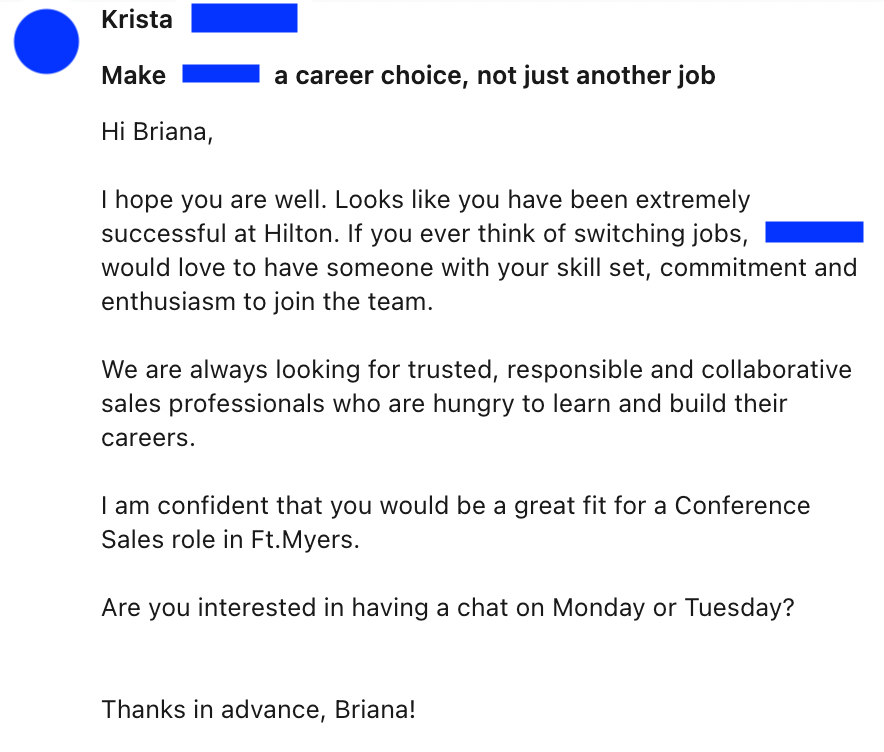
- Research the recipient’s profile to tailor your InMail, making it relevant and demonstrating genuine interest in their expertise or business.
- Keep your InMail focused on the recipient, avoiding a self-centered pitch, which can increase the chances of a positive response.
Build your LinkedIn network ethically and efficiently
Building a robust LinkedIn network shouldn’t come at the expense of professionalism.
Ethical and efficient networking practices ensure long-term success and reputation management on the platform.
- Connect with individuals you have genuine professional synergy with instead of indiscriminately adding contacts.
- Provide value to your connections through insightful content and meaningful interactions rather than solely reaching out for personal gain.
You can expand your network into new territories by going beyond the basics of LinkedIn’s degree connections and strategically utilizing tools like InMail.
Networking techniques on LinkedIn
Build connections with LinkedIn’s advanced search
LinkedIn’s advanced search is a powerful feature for identifying and connecting with potential contacts. To harness its full capacity for building your network:
- Use filters such as location, industry, and current company to find professionals who align with your networking goals.
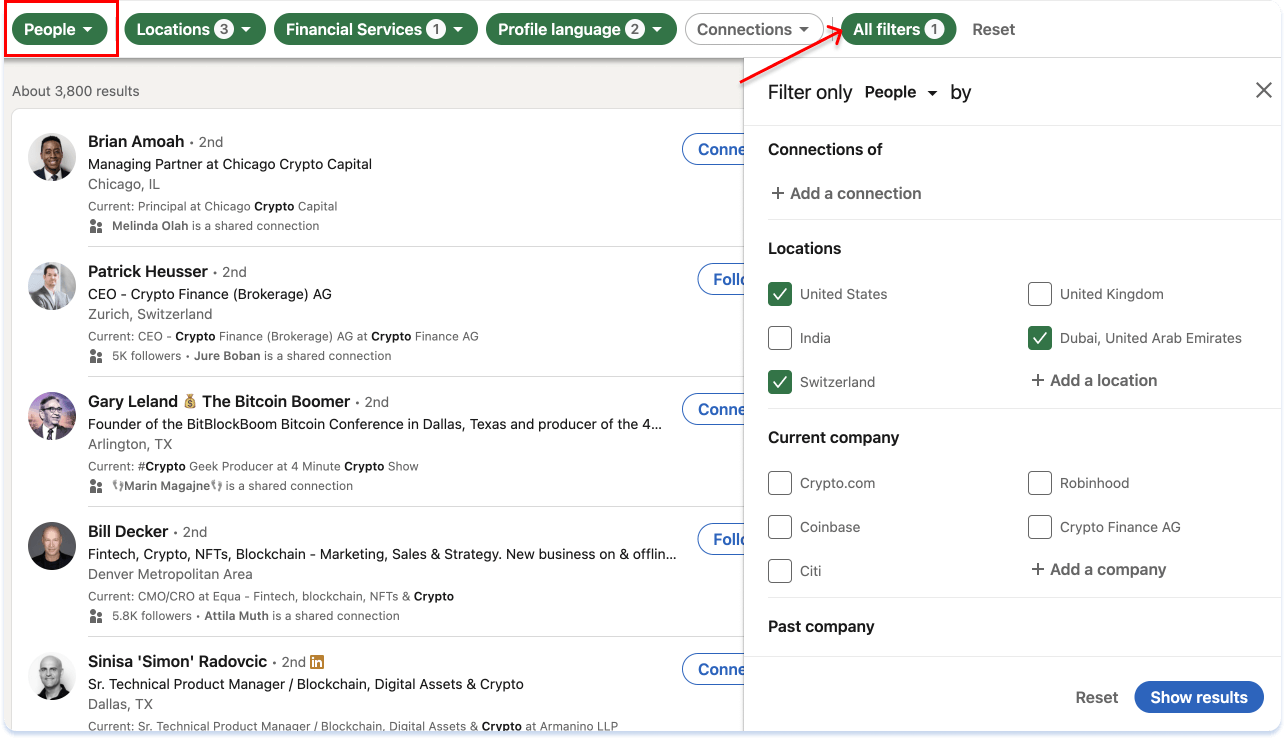
- Take advantage of Boolean search logic to refine your results and pinpoint the most relevant individuals.
Send personalized connection requests and follow-up messages
Personalized connection requests and follow-up messages are key to effective LinkedIn networking. To make a memorable impression:
- Reference specific details from the recipient’s profile or shared experiences to demonstrate genuine interest.
- Articulate a clear reason for connecting that conveys mutual benefit and sets the stage for a professional relationship.
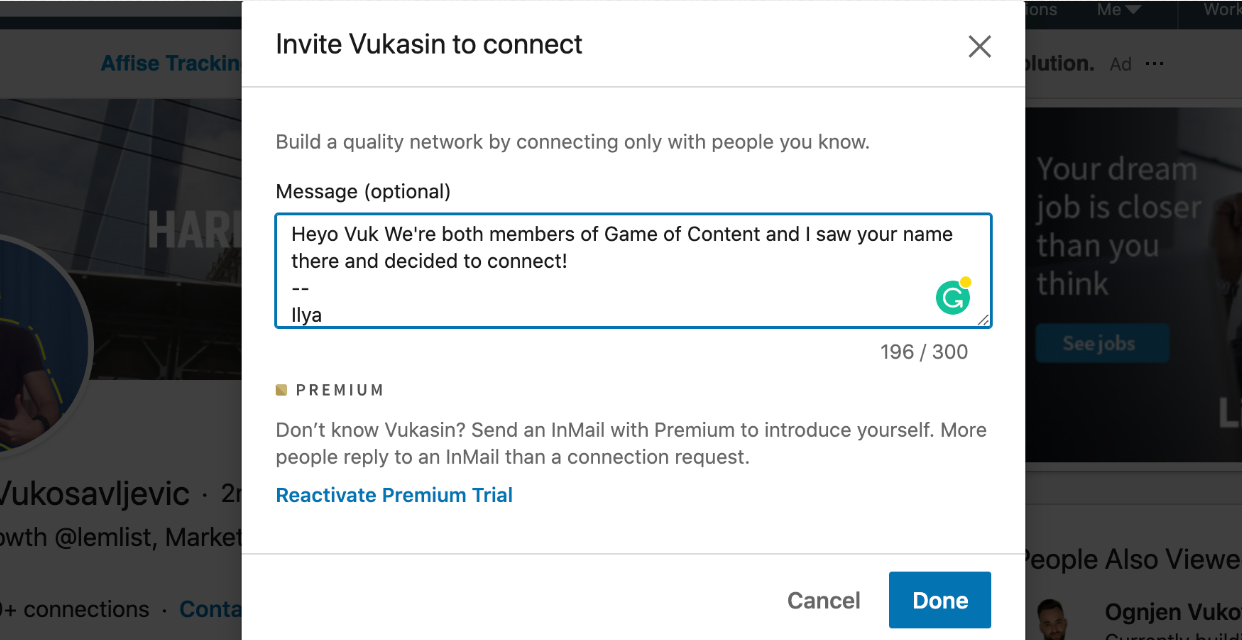
If you want more templates and examples like this one, check out our article!
Don’t forget you can use cold outreach software such as lemlist, where you can include LinkedIn steps to view profiles, send requests, messages and even voice notes!
Network through LinkedIn groups and discussions
LinkedIn groups and discussions offer a platform for engaging with like-minded professionals and thought leaders in your industry.
To network artfully:
- Join groups relevant to your field and actively participate in discussions to showcase your expertise and insights.
- Build rapport with group members by contributing valuable content and engaging in meaningful dialogue.
Using proactive networking techniques on LinkedIn can significantly enhance your professional connections.
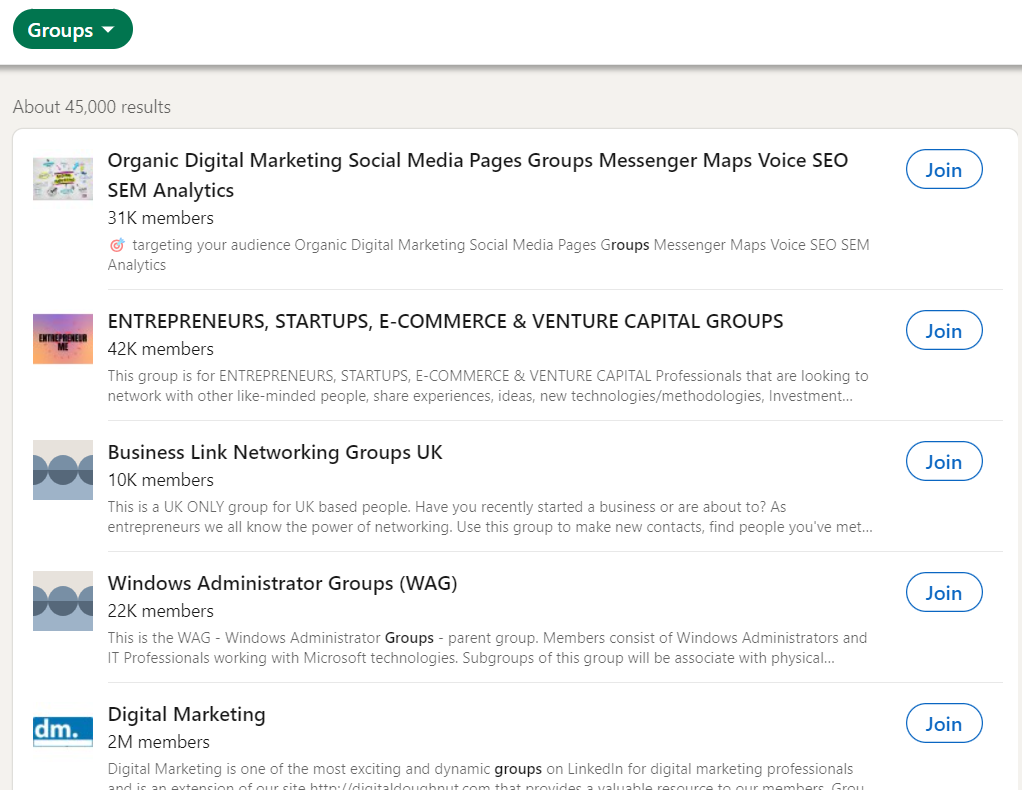
You can establish and grow a network that supports your career objectives by using advanced search functions, crafting personalized outreach, and engaging in group discussions.
Find the group that best fits you and start networking!
P.S. You can also join the lemlist family, a community where we help each other grow!
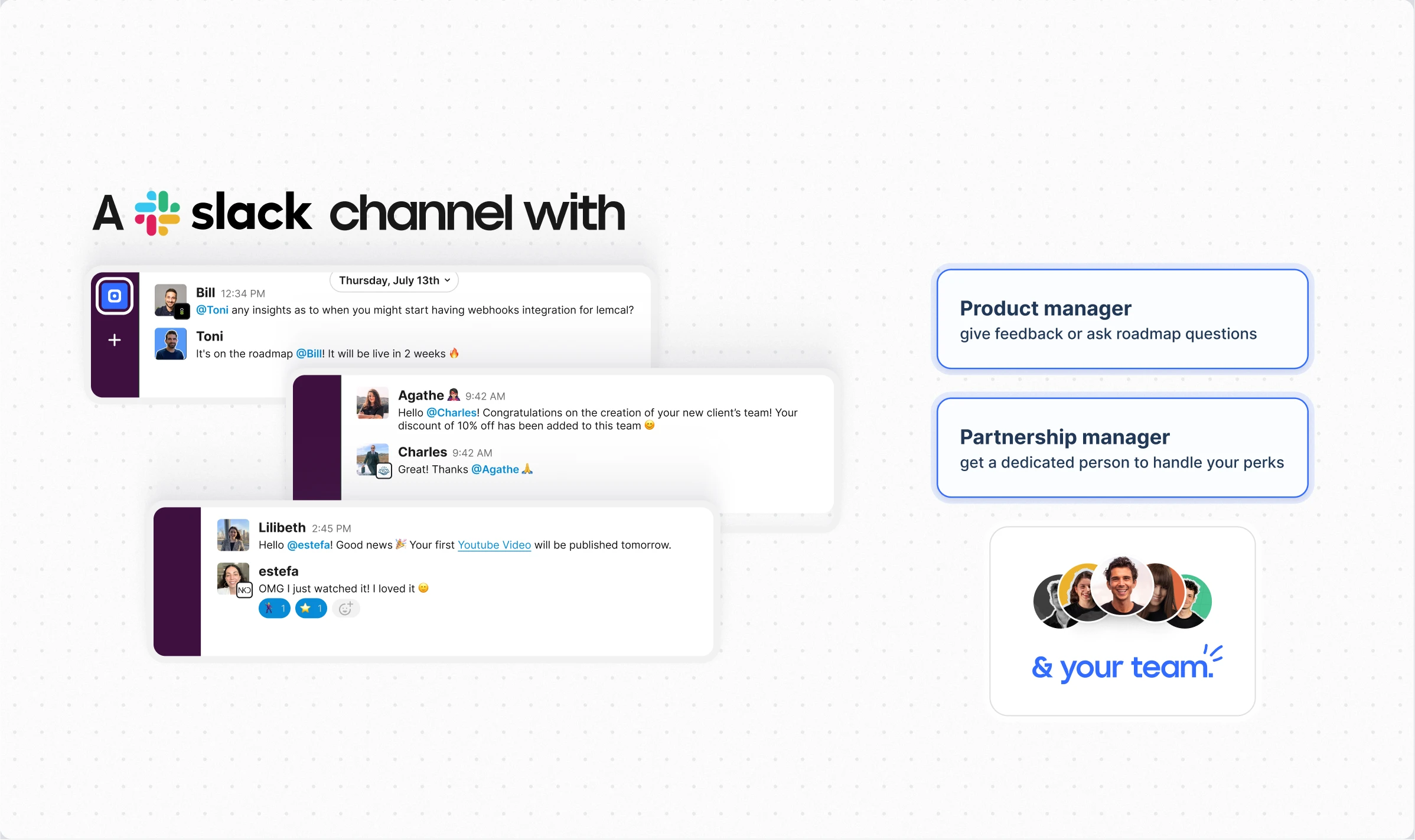
Common mistakeson LinkedIn
As you expand your LinkedIn network, you should know common pitfalls that can hinder your progress.
Avoid these mistakes:
- Don’t overlook the importance of a personalized approach when reaching out to new connections. Generic messages can seem insincere and reduce the likelihood of a positive response.
- Don’t ignore the value of existing connections while chasing new ones. Remember, a strong network is built on sustained relationships, not just numbers.
Be assertive, not intrusive
To grow your network effectively, it’s essential to be assertive but not intrusive. Here’s how:
- Ensure your message is clear about why you want to connect and how it could be mutually beneficial without being pushy.
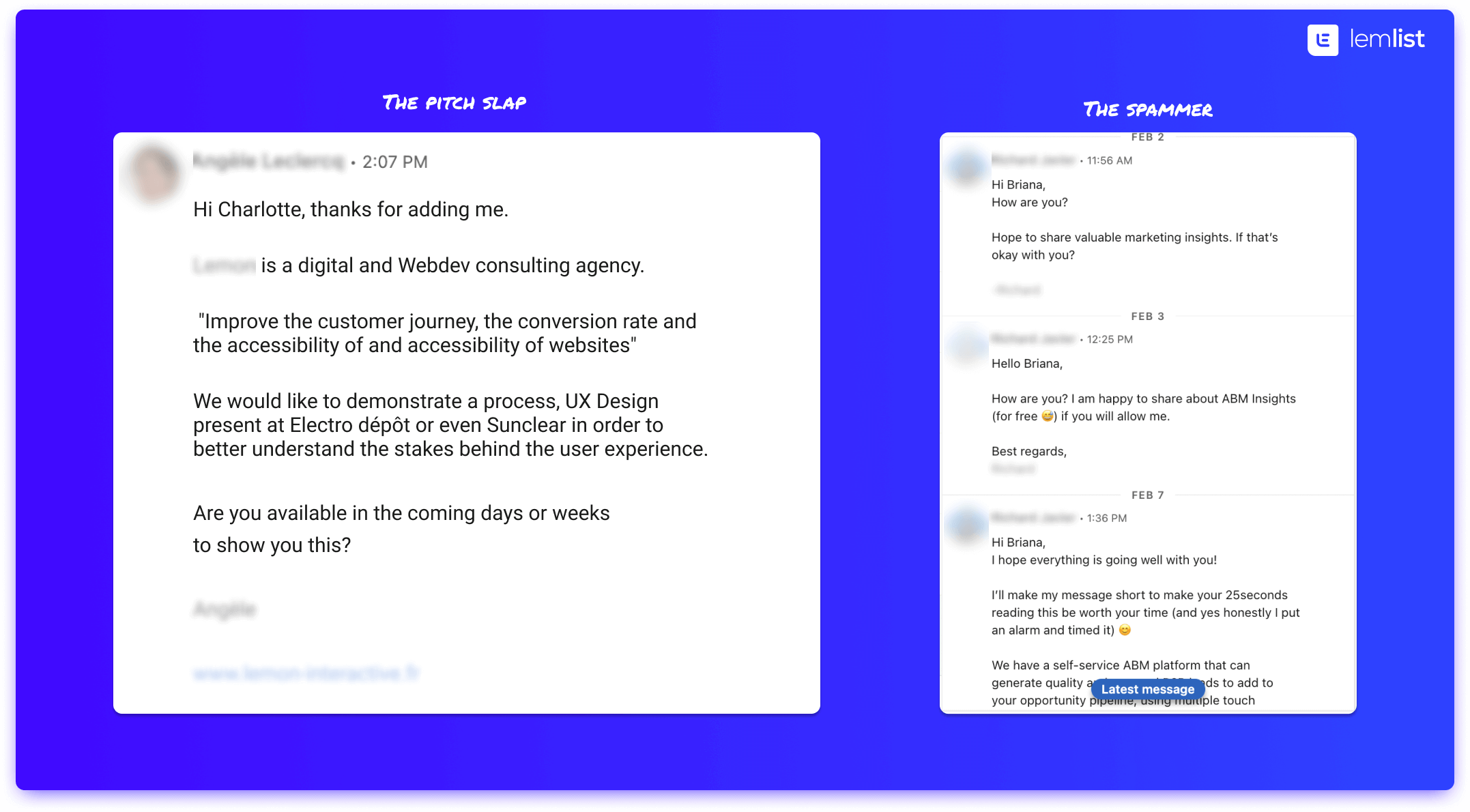
- Respect the boundaries of your connections. If they’re not interested in networking now, thank them and move on gracefully.
How can LinkedIn’s connection tiers help you?
Understanding LinkedIn’s connection degrees is crucial for a strategic approach to networking.
Your connections’ connections will help you grow your network, and therefore reach more leads.
Each tier in your LinkedIn network plays a distinct role in your professional growth and opportunities:
- 1st-degree connections are your direct contacts who can endorse your skills and provide direct introductions.
- 2nd-degree connections serve as the bridge to a broader professional circle and can be approached through mutual contacts.
- 3rd-degree connections represent the outer layer of your network, offering potential access to a vast array of industry professionals and opportunities.
Apply your networking knowledge
With a clear understanding of connection degrees, it’s time to craft an action plan that puts this knowledge into action for networking success:
- Regularly review your 1st-degree connections to identify opportunities for deeper engagement or collaboration.
- Expand your network by connecting with 2nd-degree contacts, ensuring you have a clear reason for reaching out and a mutual benefit in mind.
- Explore 3rd-degree connections by engaging with their content and finding commonalities to facilitate a warm introduction.
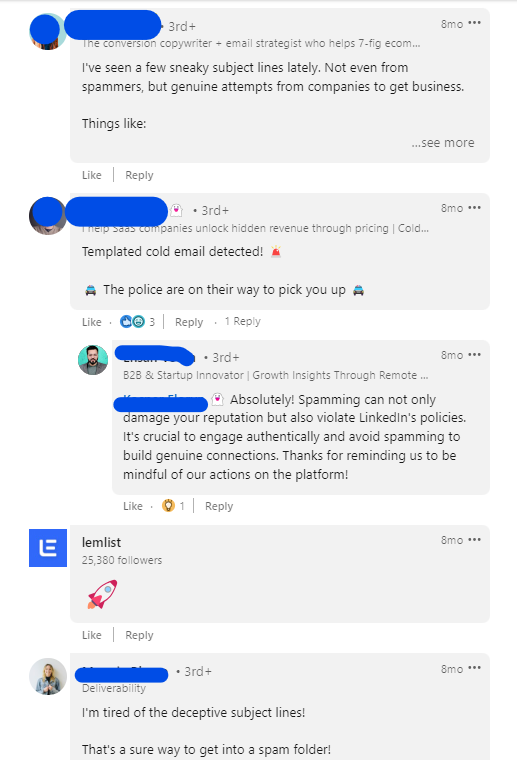
Your action plan should also include:
- Regular updates to your LinkedIn profile.
- Sharing valuable content.
- Participating in discussions to maintain visibility and relevance within your network.
Share your LinkedIn success
Success stories inspire and motivate. Share your LinkedIn victories, big or small, to encourage others and demonstrate the power of a well-maintained network:
- Post about a recent connection that led to a job opportunity, partnership, or valuable learning experience.
- Encourage your connections to engage with your success story by asking questions or sharing their experiences.
Future networking opportunities and LinkedIn updates
LinkedIn is constantly evolving, with new features and opportunities emerging regularly. Stay informed about the latest updates:
- Subscribe to LinkedIn’s official blog or newsletters to receive updates on new tools and networking features.
- Participate in webinars and online events hosted by LinkedIn influencers to learn about advanced networking strategies.
By actively engaging with the community and staying abreast of LinkedIn’s developments, you can ensure you are always maximizing your networking potential.
Key takeaways
-> 1st degree connections are LinkedIn members that accepted your invitation to connect or vice versa.
-> 2nd degree connections are LinkedIn members connected to your 1st-degree connections.
-> 3rd degree connections are people that are connected to your 2nd-degree connections.
-> Your outreach strategy should fit the degree of connection.
-> You can maximize your network potential by engaging with the community and staying updated with LinkedIn’s developments.
-> If you can’t find a way to connect them on LinkedIn, try cold emails. You can find their valid emails usin lemlist’s free email finder.
Your source of actionable outreach tips and strategies that will help you get replies and grow your business.

